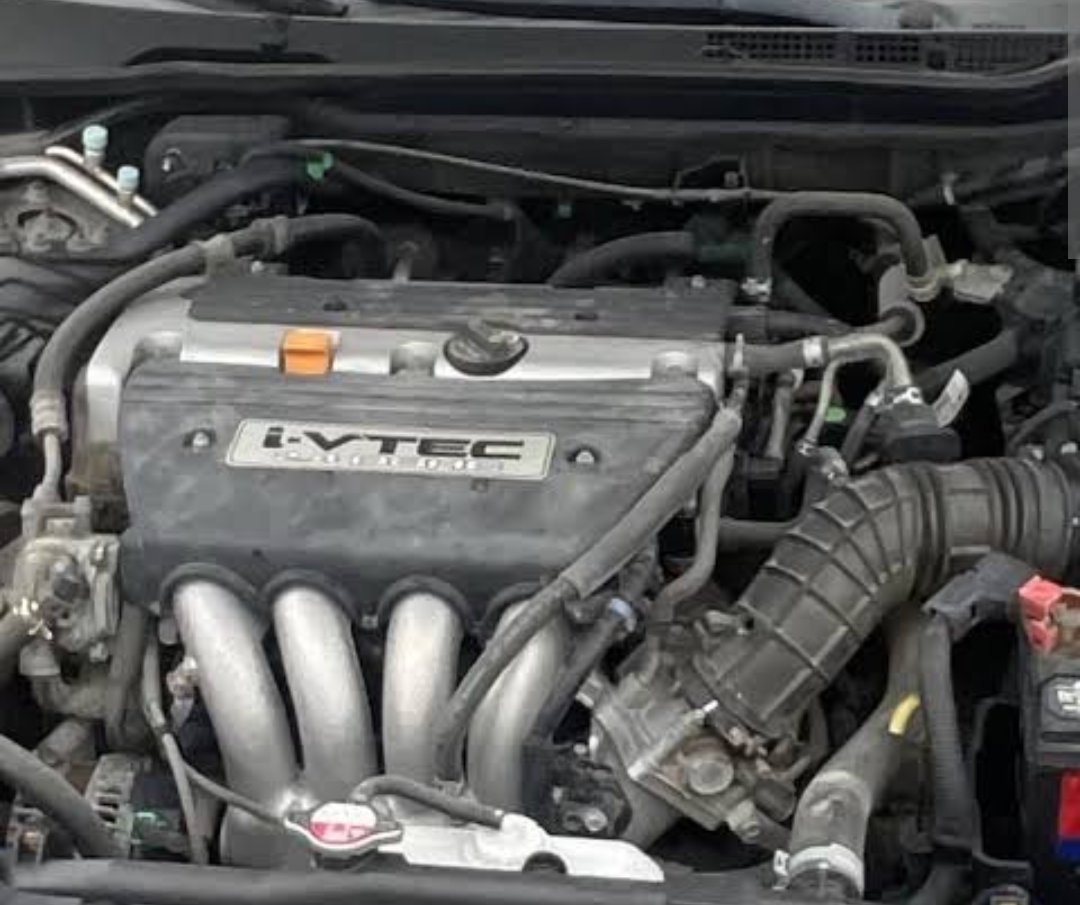Technology
How to Turbo K24A8: A Comprehensive Guide for Maximum Performance

Introduction
The K24A8 engine, a member of Honda’s K-series family, is renowned for its durability, fuel efficiency, and potential for high performance. While it’s primarily found in vehicles like the Honda Accord (2003-2007) with a focus on economy and reliability, the K24A8 has considerable untapped potential. Enthusiasts looking to significantly boost performance often turn to turbocharging. But how do you properly turbocharge a K24A8?
In this blog, we will walk you through the process of turbocharging the K24A8. From selecting the best turbo kits to necessary modifications and tuning techniques, this guide covers all the crucial steps. If you’re ready to turn your reliable daily driver into a turbocharged beast, let’s dive in.
Understanding the K24A8 Engine
The K24A8 is a 2.4-liter inline-four engine, part of Honda’s K-series family, designed to offer fuel efficiency and smooth power delivery rather than raw speed. While the K24A8 lacks the aggressive VTEC system found in sportier variants like the K24A2, it still has a robust foundation, making it an ideal candidate for turbocharging.
Some key features of the K24A8 include:
- Displacement: 2.4 liters (2,354 cc)
- Power Output: 166 horsepower at 5,500 RPM
- Torque: 160 lb-ft at 4,500 RPM
- Compression Ratio: 9.7:1
Due to its relatively low compression ratio, the K24A8 engine can handle boost better than high-compression versions of the K24 family. This makes it an excellent starting point for turbocharging, provided the appropriate supporting modifications are made. However, unlike performance-focused K-series engines, the K24A8 needs additional components and tuning to reach its true potential.
Why Turbocharge the K24A8?
Turbocharging offers several advantages for the K24A8, transforming this economy-focused engine into a powerful, performance-driven machine. Here’s why turbocharging is the go-to solution for K24A8 owners looking to boost performance:
- Significant Power Gains: By adding forced induction through a turbocharger, you can increase the horsepower and torque output by 50-100%, depending on the setup. This can take the engine from a modest 166 horsepower to over 300 horsepower with proper tuning and modifications.
- Customizable Power Delivery: Turbocharging allows you to control the amount of boost, giving you flexibility in how much power you want to extract. You can run low boost for daily driving or increase the boost pressure for track days.
- Retaining Driveability: Unlike engine swaps or high-performance NA builds, a turbocharged K24A8 can maintain the smooth and reliable characteristics that make it a great daily driver, while offering significant power on demand.
- Cost-Effective Performance: Compared to other engine modifications like swapping in a K20 or K24A2, turbocharging a K24A8 can often be more cost-effective, especially when considering the labor involved in an engine swap.
Steps to Turbocharging a K24A8
Turbocharging a K24A8 is not a simple bolt-on process; it requires careful planning and the right combination of parts. Here’s a step-by-step guide on how to turbocharge your K24A8 engine.
1. Choosing the Right Turbo Kit
The first step in turbocharging your K24A8 is selecting the right turbo kit. There are many options on the market, ranging from complete bolt-on kits to custom setups. Some popular turbo kits for the K24 series include:
- Full-Race K-Series Turbo Kit
- Greddy Turbo Kit
- PTP Turbo Blanket & Downpipe
When choosing a turbo kit, consider the following:
- Turbo Size: Smaller turbos offer quicker spool times, which is ideal for street driving, while larger turbos provide more top-end power but may have lag at lower RPMs.
- Intercooler: An efficient intercooler is crucial to keeping intake temperatures low, especially at higher boost levels.
- Wastegate & Blow-Off Valve (BOV): A good wastegate regulates boost pressure, while the BOV prevents compressor surge.
2. Upgrading Fuel Delivery
Turbocharging increases the amount of air entering the engine, so you need to supply more fuel to maintain the correct air-fuel ratio. Key components include:
- Fuel Injectors: Upgrading to high-flow fuel injectors is essential. Most turbocharged K24A8 setups require injectors in the 550cc to 1000cc range, depending on the boost level.
- Fuel Pump: A higher-capacity fuel pump is necessary to handle the increased fuel demand. A Walbro 255 or similar pump is a common upgrade for turbocharged applications.
- Fuel Pressure Regulator: Installing an adjustable fuel pressure regulator helps fine-tune the fuel system to ensure consistent delivery under boost.
3. ECU Tuning and Engine Management
Tuning is perhaps the most critical aspect of turbocharging your K24A8. Without proper tuning, your engine won’t run efficiently and could suffer catastrophic damage. Options for ECU tuning include:
- Hondata K-Pro: One of the most popular tuning solutions for the K-series, Hondata K-Pro offers advanced tuning capabilities, allowing you to adjust ignition timing, fuel delivery, and boost pressure.
- AEM Infinity: A standalone ECU option that provides even more control over engine parameters but is generally more complex and expensive.
A dyno tune is highly recommended after installing the turbo, as it allows for precise adjustments based on real-world performance data.
4. Internal Engine Upgrades
While the K24A8 has a strong block, running high levels of boost on a stock engine can lead to failure. For a reliable turbo build, consider upgrading the following internal components:
- Pistons & Rods: Forged pistons and connecting rods are a must for handling higher boost levels, preventing damage to the engine under increased pressure.
- Head Gasket: A multi-layer steel (MLS) head gasket will improve sealing and help withstand the extra stress of turbocharging.
- ARP Head Studs: Upgraded head studs provide added clamping force, preventing the head from lifting under high boost pressure.
5. Exhaust and Intake System
Efficient airflow is crucial for turbocharged engines. To maximize the potential of your turbo setup, upgrade the following:
- Turbo Manifold: A high-quality turbo manifold is essential for mounting the turbo and ensuring proper exhaust flow. Tubular manifolds are generally more efficient than cast manifolds but can be more expensive.
- Exhaust System: A 3-inch turbo-back exhaust system will help reduce backpressure and improve performance. It’s also important to consider the type of catalytic converter, if you plan to keep your build street-legal.
- Intake System: A cold air intake will help deliver cooler air to the engine, improving efficiency and power output.
6. Boost Control and Monitoring
To ensure the turbo system operates safely, install boost control and monitoring devices, including:
- Boost Controller: An electronic or manual boost controller allows you to adjust boost levels on the fly.
- Boost Gauge: A quality boost gauge will help you monitor boost pressure and prevent over-boosting.
- Wideband O2 Sensor: Installing a wideband O2 sensor is crucial for monitoring air-fuel ratios, ensuring the engine runs safely under boost.
Common Challenges and Solutions
Turbocharging a K24A8 is not without its challenges. Some common issues include:
- Heat Management: Turbo systems generate a significant amount of heat, which can lead to overheating. Address this by using heat-resistant materials like turbo blankets and ceramic-coated exhaust components.
- Turbo Lag: Larger turbochargers can suffer from lag, causing a delay in power delivery. You can mitigate this by choosing a smaller turbo or adding anti-lag systems.
- Fuel Delivery Issues: Ensuring consistent fuel delivery is vital. Invest in quality fuel system components and regularly check for any leaks or fuel pressure drops.
- Engine Knock: Running too much boost without proper tuning can cause engine knock (pre-detonation). Ensure your ECU tuning is spot-on, and consider using high-octane fuel to reduce the risk of knock.
Conclusion
Turbocharging the K24A8 is a great way to unlock its hidden potential, transforming a reliable engine into a high-performance powerhouse. With the right parts, tuning, and careful planning, you can achieve significant power gains without sacrificing reliability or drivability.
Whether you’re aiming for a street-legal daily driver or a track-focused monster, turbocharging your K24A8 opens up a world of possibilities. Just be sure to follow the necessary steps for upgrading the fuel system, engine internals, and tuning, and you’ll be rewarded with impressive performance gains.
By understanding the ins and outs of how to turbocharge a K24A8, you can confidently take your Honda Accord or similar vehicle to the next level. Enjoy the thrill of turbocharged power with the satisfaction of a build done right.
